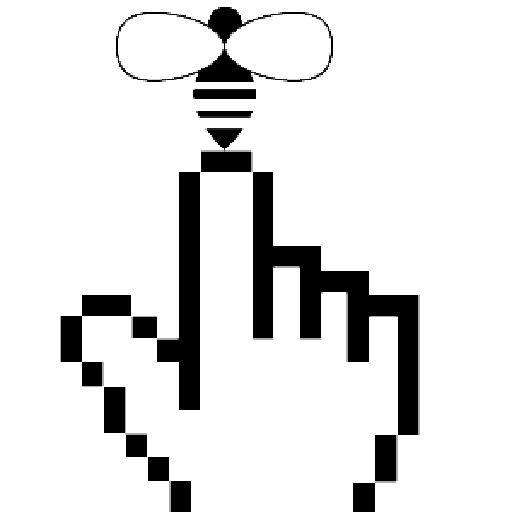New Museum for Bees (NMB)
As a further development of their art work the collective "finger" (Florian Haas and Andreas Wolf) are establishing the New Museum for Bees (NMB) in Frankfurt / Main in 2012.
"For Bees" will be taken literally here, so that all exhibition rooms of the museum will be designed mainly for the visiting and use of bees. But also the singular exibitions, as well as the observation of the peculiar visitor’s stream will be of interest for people, so that the museum will be accessible to all that are interested within the regular opening hours.
The outer appearance of the New Museum for Bees will refer to the tradition of sculptured beehives. Sculptured beehives are single beehives or whole apiaries, which are cultivated by beekeepers and at the same time are individually and specially designed by their users. Often mockups of human heads were put on top of beehives or the entire beehive was fashioned as a human figure, placing the entrance so that it would appear as if the bees were flying in and out of the mouth, the eyes or other possible orifices of the body. Aside from scaring off children, these peculiarly designed containers, the so called spell masks or folk art animal and saints figures, also submitted a self-reflecting testimony of the beekeepers’ selfimage and their cultural context. In respect to beekeeping the New Museum for Bees intentionally follows this tradition, by placing single exhibition rooms on top of each bee colony. In this way a whole apiary, consisting of 10 colonies for example, will become the pedestal for the 10 exibition rooms of the museum. Using different openings, the bees are allowed to “walk” through the individual rooms or rather fly.
Besides being visitors to the museum, the colonies are also relevant in economic terms. Consequently, it is planned to meet expenses for the upkeep of the museum and therefore in the long run also for the respective production budget for single exhibition spaces out of the financial return of the colonies’ production. In addition, individual colonies and therefore associated thematic priorities of single exibition rooms could be financially supported by individuals or institutions, similar to the bee sponsorships. The creative, artistic and museological background of this approach is based on institutions from the recent past and present, as for example the Adler Museum of Marcel Broodthaers, the Karl Ernst Osthaus Museum in Hagen under the direction of Michael Fehr, the Museum for Jurassic Technologies in Los Angeles, the Center for Land Use Interpretation in Los Angeles and the Museum for Modern Art in Frankfurt / Main.
For the collective "finger" this background results from longtime co-operations, as for instance with KEOMs, C.L.U.I. and the MMK, especially on grounds of the specific orientation of these institutions, which all are characterized by their explicit orientation towards socially formative processes as a space of resonance for artistic productions. Likewise, they have in common, that they all work actively and experimentally on advancing the institution of the museum into a place for contemporary artistic practice and mediation.
In close co-operation with scientific, social and artistic institutions (bee-group Würzburg, Office for the Environment Frankfurt, Bee Institut Oberursel, GPE – society for psychosocial facilities Mainz, Museum for Modern Art Frankfurt am Main, museum angewandte kunst, Frankfurt am Main), architects, designers, historians, (animal-) philosophers, artists, technicians and beekeepers the New Museum for Bees is expected to grow gradually in the coming years.
At the same time, the scope of the museum will not be restricted to one location, but in its self-image as an operational museum, will establish other branches in their specific contexts in addition to the Frankfurt location.
With the new foundation of the Museum for Bees the collective "finger" tries to pursue two goals equally. On the one hand, a historical overview is developed documenting in which way bees in the past have been used as a role model for human, socially formative processes (Beehives as model for monarchist, nationalist and democratic society organization). On the other hand and primarily, it will focus on up-dating these historical developments at present age to show which selfimage of our globalized society is significant to the current use of bees.
Photo: Alexey Narodizkiy © Garage Museum of Contemporary Art gruppe finger
gruppe finger